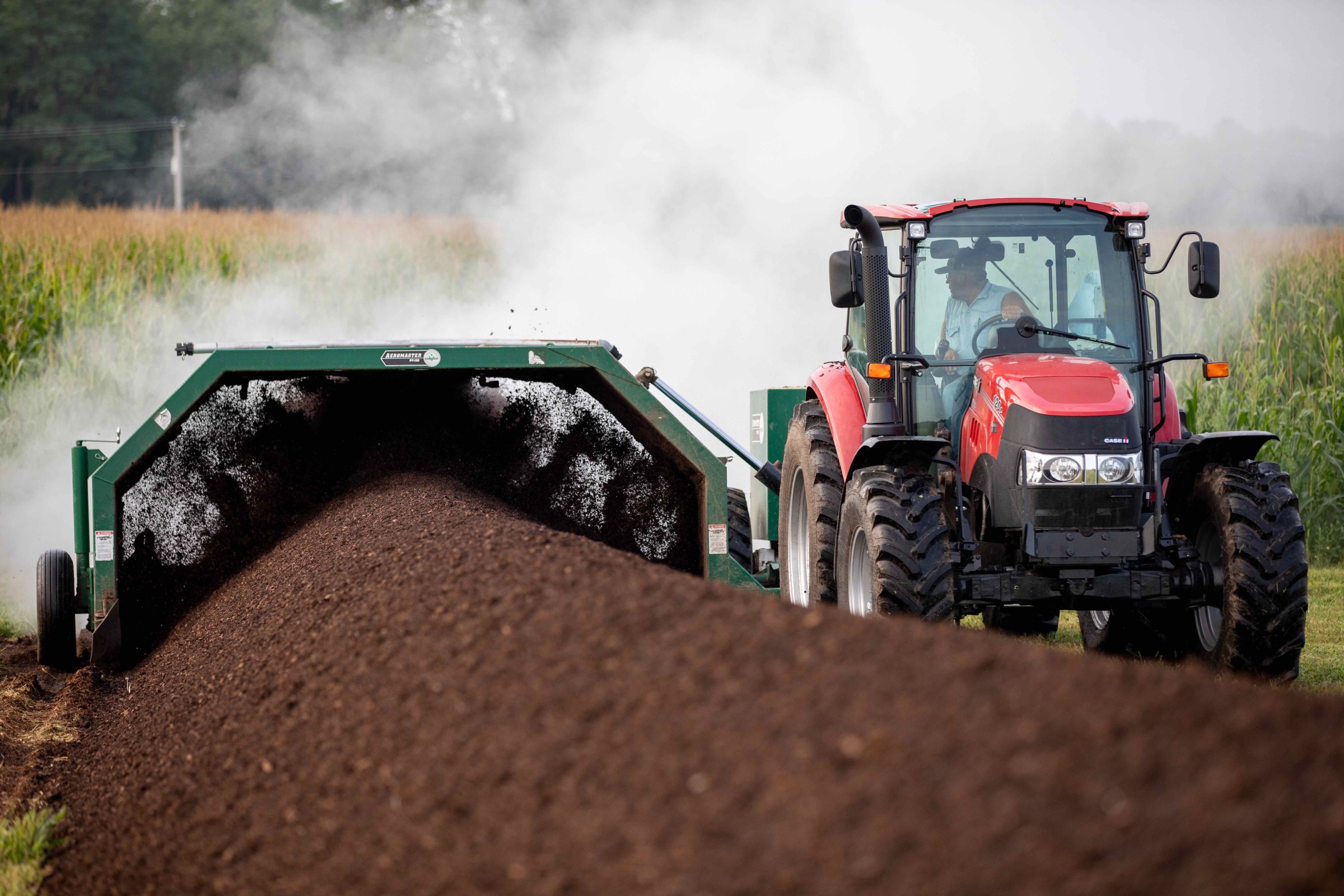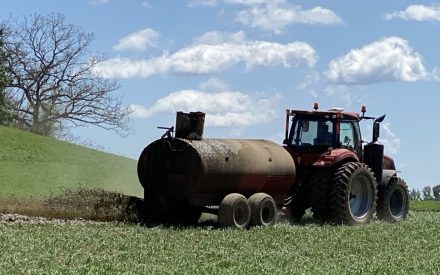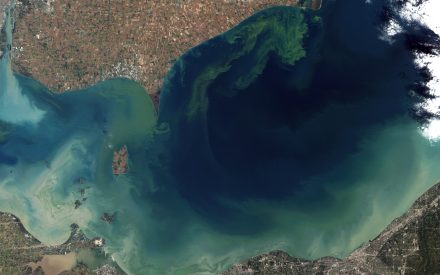Farms with livestock have the unique advantage of being able to supply manure, which has many of the nutrients required for crop production, to their fields. However, the application of manure also comes with potential risks to water quality. In order to protect water quality and use these nutrients to support crop growth, manure has to be applied with consideration for timing, method, and rate. While all these factors are important, the proper timing of manure application reduces nutrient runoff from fields and reduces risk of water quality impacts.
Composting creates flexibility in timing of manure applications
One option to better control the timing of manure application is composting all or some of the farm’s manure. Through the composting process, the amount of liquid in the manure is reduced, which makes it an easier product to manage, store, transport and apply. This allows for increased flexibility in the timing of manure applications.
Composting has the potential to reduce phosphorus loss during high risk time periods such as periods of frozen ground, saturated soil, high precipitation or lack of soil cover. First, composting reduces the need to spread manure during a high-risk time period because finished compost has the flexibility to be stored and applied when the crop needs it. Composting increases application options during the growing season by allowing application on growing hay and pastures without risking damage to the crop or decreasing palatability. Because compost is a drier product, it does not add as much moisture content to soil when runoff risk is high.
Composting increases soil infiltration
The higher dry matter content of compost can also help increase infiltration by adding organic matter which is vital for aggregate stability, a key indicator of healthy and productive soil. Good aggregate stability means that soil particles bind strongly together and are more protected from impacts of precipitation. With increased aggregate stability, the runoff risk for particulate phosphorus loss (phosphorus bound to the soil) is reduced, especially when used in combination with other erosion control methods like cover crops, waterways, and reduced tillage. Additionally, composting produces a more stable form of organic matter that should last longer in the soil compared to the application of raw manure.
Runoff contains dissolved and particulate phosphorus.
Dissolved phosphorus moves with water, and particulate phosphorus moves while attached to soil particles.
According to Discovery Farms research in Wisconsin, dissolved phosphorus loss is most likely to occur while the soil is frozen during February and March, and particulate phosphorus loss is most likely to occur in April, May and June due to erosion caused by saturation levels of the soil and little soil protection.
Particulate P = P attached to soil particles (in water)
Dissolved P = soluble reactive P in water
Total P = Particulate P + Dissolved P


 Save money and get cleaner water by correctly utilizing manure
Save money and get cleaner water by correctly utilizing manure ▶Watch: Manure and water quality: Why looking at the calendar matters
▶Watch: Manure and water quality: Why looking at the calendar matters The best times to spread manure and why
The best times to spread manure and why Avoiding manure overapplication, one way to mitigate the risk of nutrient runoff
Avoiding manure overapplication, one way to mitigate the risk of nutrient runoff


